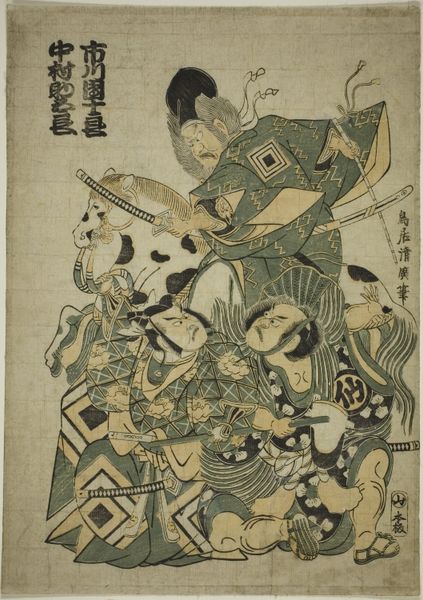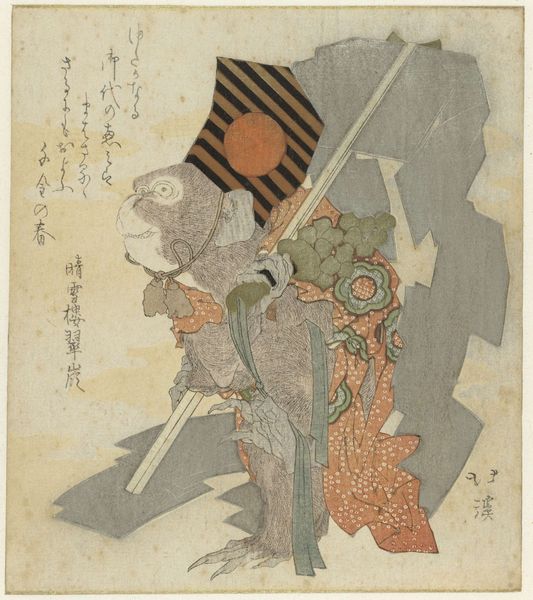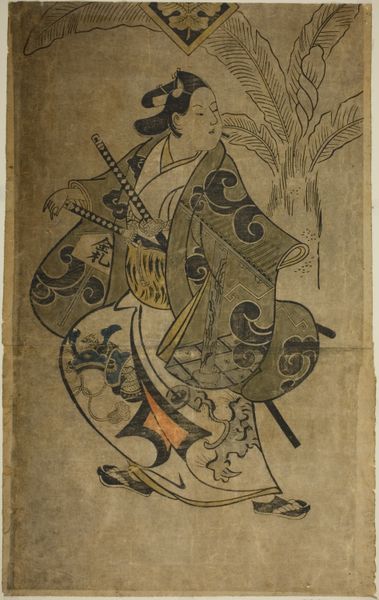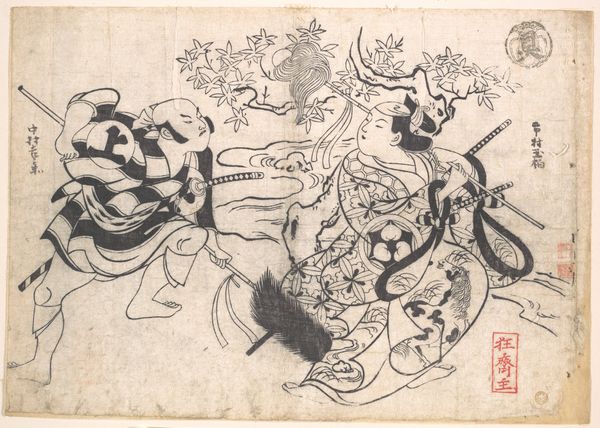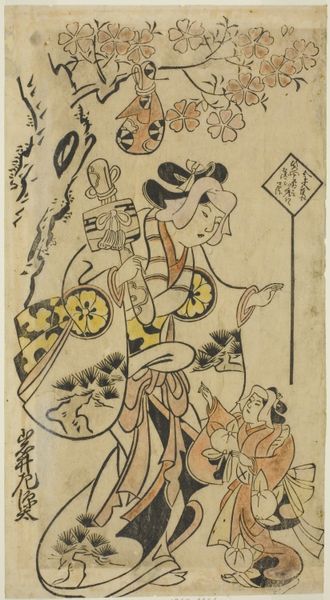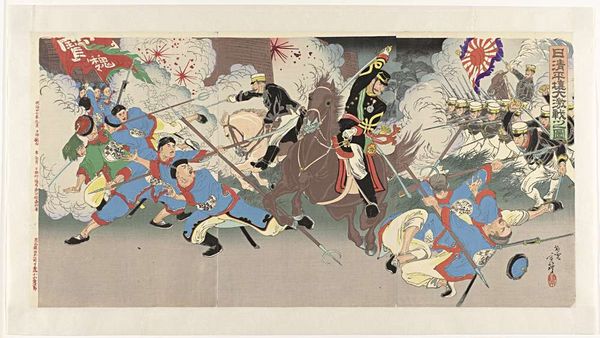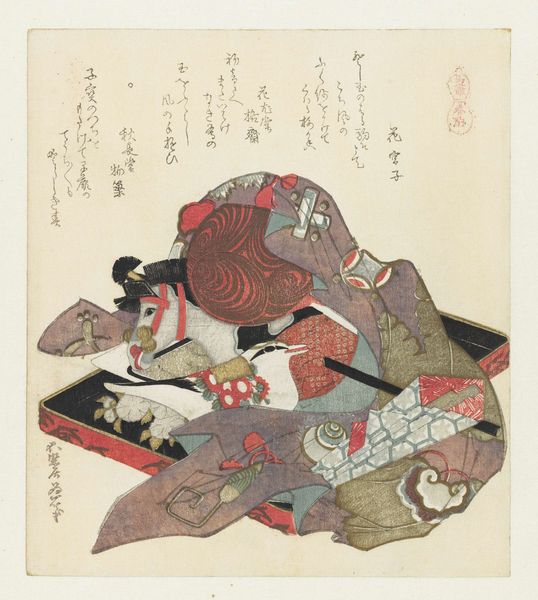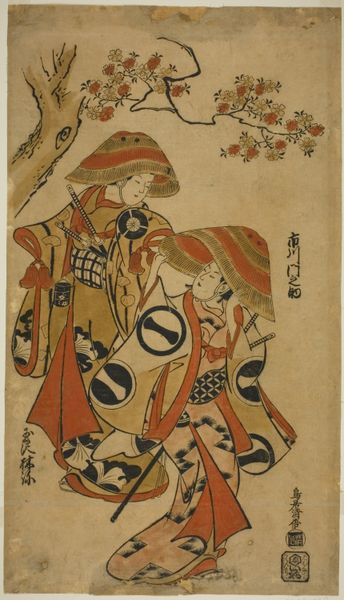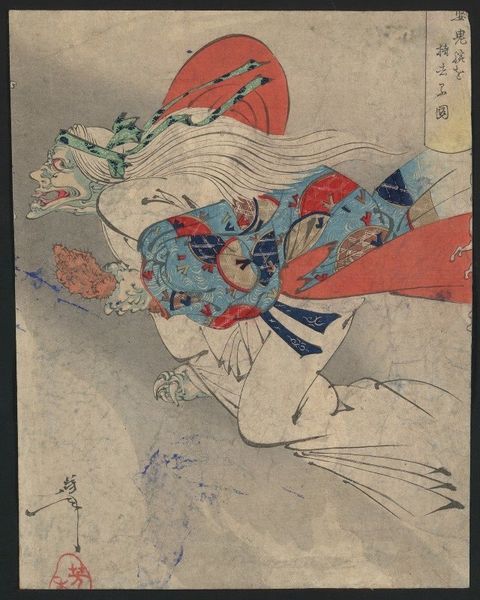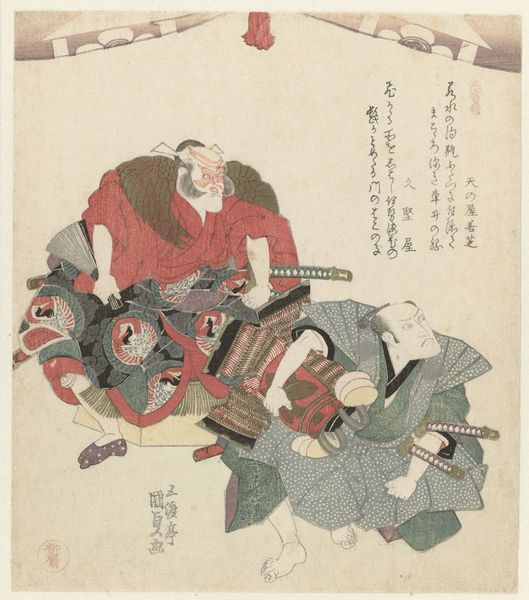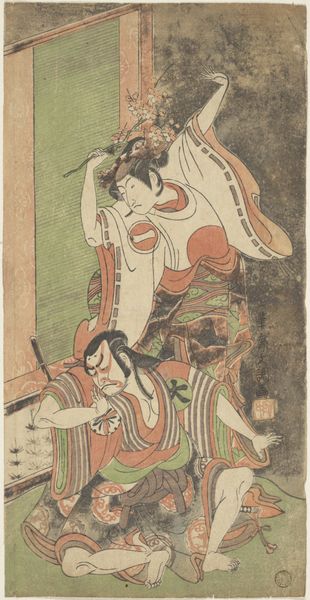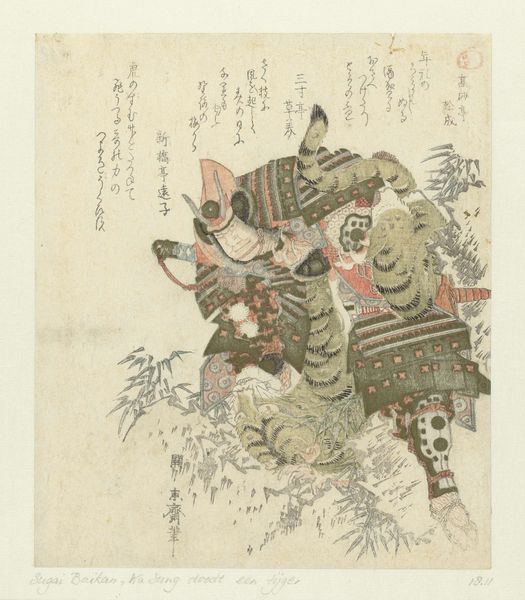
Acteurs Nakamura Denkuro I en Bando Matakuro, in de rol van Yakko, een speerdans uitvoerend 1710 - 1715
0:00
0:00
print, woodcut, engraving
#
portrait
# print
#
asian-art
#
ukiyo-e
#
figuration
#
woodcut
#
engraving
Dimensions: height 532 mm, width 316 mm
Copyright: Rijks Museum: Open Domain
Editor: This striking woodcut by Torii Kiyonobu I, made around 1710-1715, is titled "Acteurs Nakamura Denkuro I en Bando Matakuro, in de rol van Yakko, een speerdans uitvoerend," which translates to something like, "Actors Nakamura Denkuro I and Bando Matakuro, in the role of Yakko, performing a spear dance." The figures feel so dynamic! What details do you find particularly noteworthy here? Curator: Immediately, I'm drawn to the symbolic language interwoven into the composition. Consider the actors themselves. The exaggerated features, especially the bold lines defining their faces and clothing, evoke a powerful stage presence and perhaps even a sense of heightened emotion inherent in Kabuki theater. Editor: I can see that. The stylized elements are really emphasized. Curator: Exactly. And what about the floral and geometric motifs adorning the top of the print? These aren’t mere decorations; they operate as visual cues that might connect the performance to specific stories, seasons, or even auspicious symbols tied to societal beliefs at that time. It acts as a cultural memory that is re-activated each time the print is viewed. Do you think the repeated diamond shapes could be family crests? Editor: Possibly, given their deliberate placement, almost like emblems. Curator: Precisely! They could allude to the actors' lineages, patrons, or the theatrical house sponsoring the performance. The wisteria could symbolize longevity or resilience. Understanding this symbolic code enriches our engagement. Editor: I hadn't considered the depth of the symbols. Seeing beyond just the figures to the story being told with patterns is fascinating. Curator: It shows how imagery persists, linking past and present in potent ways. Editor: Thanks. It really highlights how images are active participants in cultural conversations, not just passive reflections of the past.
Comments
No comments
Be the first to comment and join the conversation on the ultimate creative platform.
